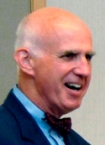April 5, 2012
Budgets Top Spring Agenda on Capitol Hill
The 2013 fiscal season kicked off on Capitol Hill in late March with the House passage of the budget resolution authored by Budget Committee chair Rep. Paul Ryan (R-WI). The Ryan budget plan, with its strong partisan position on spending and revenues, drew little bipartisan support on the floor vote, signaling months of deadlock while the two parties and both House and Senate find disagreement on most fiscal matters. This being an election year with a presidential race in the mix, the politics of posturing commands the floor.
Ryan’s budget takes a broad sweep of the scythe at much of the federal government’s cultural agenda. The budget proposal asserts that funding “can no longer be justified” for the National Endowment for the Arts, the National Endowment for the Humanities and the Corporation for Public Broadcasting. According to the House Budget Committee’s report, “The activities and content funded by these agencies go beyond the core mission of the Federal Government and they are generally enjoyed by people of higher income levels, making them a wealth transfer from poorer to wealthier citizens. These agencies can raise funds from private-sector patrons, which will also free them from any risk of political interference.”
Federal funds for museums and libraries also get the cut in the Ryan budget. Failing to meet the grade as “a core federal responsibility,” museums should look instead to “charitable contributions from the private sector” along with available state and local funding opportunities, according to the budget report.
In education spending, the Ryan plan would eliminate “ineffective and duplicative” federal education programs, including the U.S. Department of Education’s program of support for innovation in arts education. The budget report claims to go after programs that are failing to improve student achievement—blind to countless research findings on the effectiveness of arts education in school curricula.
Concurrent with the introduction of the Ryan budget resolution, a glimmer of bipartisan budgeting shone through in a proposal laid out by three Republican and three Democratic House members modeled on the Simpson-Bowles Fiscal Commission’s recommendations of last year. Their alternative budget calls for a package of deficit reduction policies that would come from raising revenues by reforming the tax code, slowing health care cost growth, tightening discretionary caps, reforming Social Security and enacting other spending reductions.
The bipartisan plan does not include specific policies, so the fate of federal arts spending and other cultural funding is not spelled out. However, the composition of the group includes legislators from both parties whose floor votes have been crucial to preserve arts spending. The six budgeters are Reps. Mike Quigley (D-IL), Charlie Bass (R-NH), Tom Reed (R-NY), Steven LaTourette (R-OH), Kurt Schrader (D-OR) and Jim Cooper (D-TN).
In this Issue
State to State
- Indiana: Grant Panel Audio Files Service
- Massachusetts, Florida: Blogging to Broaden Reach
- Utah: Connecting Constituents with Video Poems
- Arizona, California, D.C.: Using Facebook to Reap Public Benefits
Legislative Update
Executive Director's Column
Research on Demand
SubscribeSubscribe
×
To receive information regarding updates to our newslettter. Please fill out the form below.

